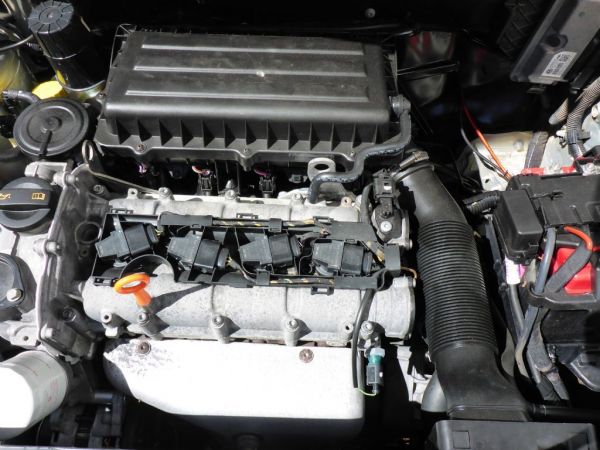Ensure consistent power with a high-performance clp engine.
Ensure consistent power with a high-performance clp engine.
Blog Article
Exactly How a Clp Engine Can Improve Efficiency in Different Industries
The arrival of CLP engines marks a substantial shift in functional effectiveness across different fields, driven by their capability to maximize fuel intake and minimize downtime. Industries such as manufacturing and logistics stand to gain substantially from their durable style and consistent power output, which promise to simplify operations and improve performance. As companies significantly focus on sustainability along with efficiency, the role of CLP engines comes to be a lot more vital. What stays to be seen is how these developments will form the future landscape of industrial procedures and their effect on wider economic trends (clp engine).
Review of CLP Engines
CLP engines, or Constant Liquid Propellant engines, represent a considerable advancement in propulsion technology, especially for area applications. These engines use a continual feed system that permits the continual expulsion of propellant, resulting in boosted efficiency and efficiency contrasted to conventional solid or hybrid propulsion systems. By keeping a continuous flow of liquid propellant, CLP engines can accomplish a lot more precise thrust control, which is important for steering spacecraft in various mission situations.
The design of CLP engines integrates innovative materials and cutting-edge gas administration systems. clp engine. This causes decreased weight and enhanced dependability, necessary variables for long-duration area missions. The continual procedure lessens the threat of combustion instability, a common difficulty in standard rocket engines.

Benefits in Production
The production of Continual Liquid Propellant (CLP) engines presents numerous noteworthy advantages that improve both performance and cost-effectiveness. One of the main advantages is the streamlined production process, which lowers the complexity associated with conventional propulsion systems. By utilizing fluid propellant, producers can accomplish higher accuracy in engine efficiency, leading to optimized power outcome and minimized waste.
In addition, CLP engines promote a greater level of modularity, permitting easier combination into different production lines. This flexibility can dramatically decrease lead times and boost general operational adaptability. Making use of CLP modern technology likewise tends to reduce the demand for substantial upkeep as a result of fewer relocating components, which translates right into decreased downtime and operational costs.

Applications in Logistics
Leveraging Continuous Fluid Propellant (CLP) engines in logistics provides considerable advantages in operational efficiency and reliability. These engines give a robust option for different transportation demands, making it possible for the seamless motion of products across huge distances. The inherent layout of CLP engines enables consistent power result, which converts right into smoother and more predictable transport timetables.
Among the crucial applications of CLP engines in logistics remains in heavy-duty products transportation, where they can drive both ground and airborne lorries. Their capacity to keep high performance under differing load conditions makes certain that delivery timelines are fulfilled, consequently boosting client fulfillment. In addition, CLP engines can be incorporated into automated logistics systems, facilitating real-time tracking and optimizing path planning.
In addition, the sturdiness of CLP engines decreases upkeep downtime, permitting logistics business to maximize their functional capabilities. This is especially useful in warehousing procedures, where efficiency in managing and transporting items is critical. As logistics remains to develop, the integration of CLP engines stands for a forward-thinking strategy that not just improves efficiency but also supports the sector's expanding demands for dependability and speed.
Effect On Energy Effectiveness
Exactly How do Constant Liquid Propellant (CLP) engines boost power performance in transport? CLP engines use a consistent circulation of liquid gas, optimizing burning processes and maintaining a secure thrust outcome. This style lessens energy losses linked with conventional burning engines, where gas delivery can differ and result in ineffectiveness.
The continuous operation of CLP engines permits an extra reliable thermal cycle, resulting in higher particular impulse contrasted to traditional engines. clp engine. This equates to minimized gas intake for the exact same amount of job done, substantially decreasing functional costs throughout numerous transport fields, including air travel and maritime markets
Furthermore, the ability of CLP engines to preserve optimal efficiency under differing load problems decreases the requirement for frequent acceleration and slowdown, additionally improving fuel efficiency. Boosted power efficiency not only adds to set you back savings but also causes reduce greenhouse gas emissions, aligning with international sustainability goals.
Future Trends and Innovations
Emerging developments in Continuous Liquid Propellant (CLP) engine technology promise to transform the landscape of transport performance and sustainability. As markets pivot toward greener alternatives, CLP engines stand at the forefront, integrating ingenious products and style methods that enhance efficiency while lessening ecological influence.
Among one of the most encouraging fads is the fostering additional info of hybrid systems that incorporate CLP engines with renewable resource resources. This harmony can maximize fuel consumption and decrease discharges, lining up with Learn More Here global sustainability objectives. Furthermore, improvements in computational liquid characteristics (CFD) are facilitating the style of even more aerodynamically efficient engines, bring about reduced drag and boosted fuel performance.
In addition, the advancement of wise tracking systems is readied to enhance operational efficiencies. These systems leverage information analytics and IoT modern technology to enhance engine efficiency in real-time, making certain that the engines run within their most efficient specifications.
As research study remains to check out alternative propellant formulas-- such as biofuels and artificial gas-- the future of CLP engines looks encouraging. By taking advantage of these technologies, markets can not only enhance their performance yet also add dramatically to a cleaner, more lasting future in transport.
Final Thought
In final thought, CLP engines stand for a considerable improvement in effectiveness across numerous markets. Their capacity to enhance gas consumption and minimize operational prices, go to my blog integrated with a continuous feed system, boosts power output and functional reliability. The combination of sophisticated materials and less relocating components minimizes maintenance demands, while placement with sustainability goals positions CLP engines as a critical technology for the future. Continued development in this field assures additional renovations in effectiveness and ecological efficiency.
Report this page